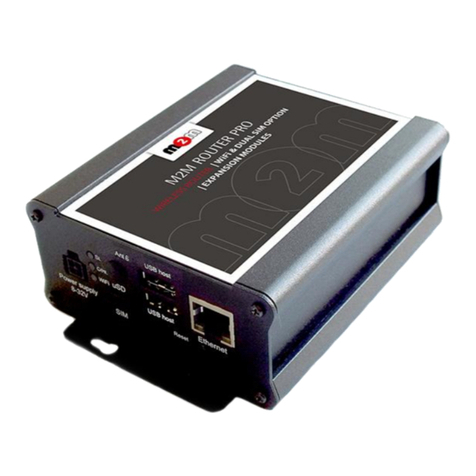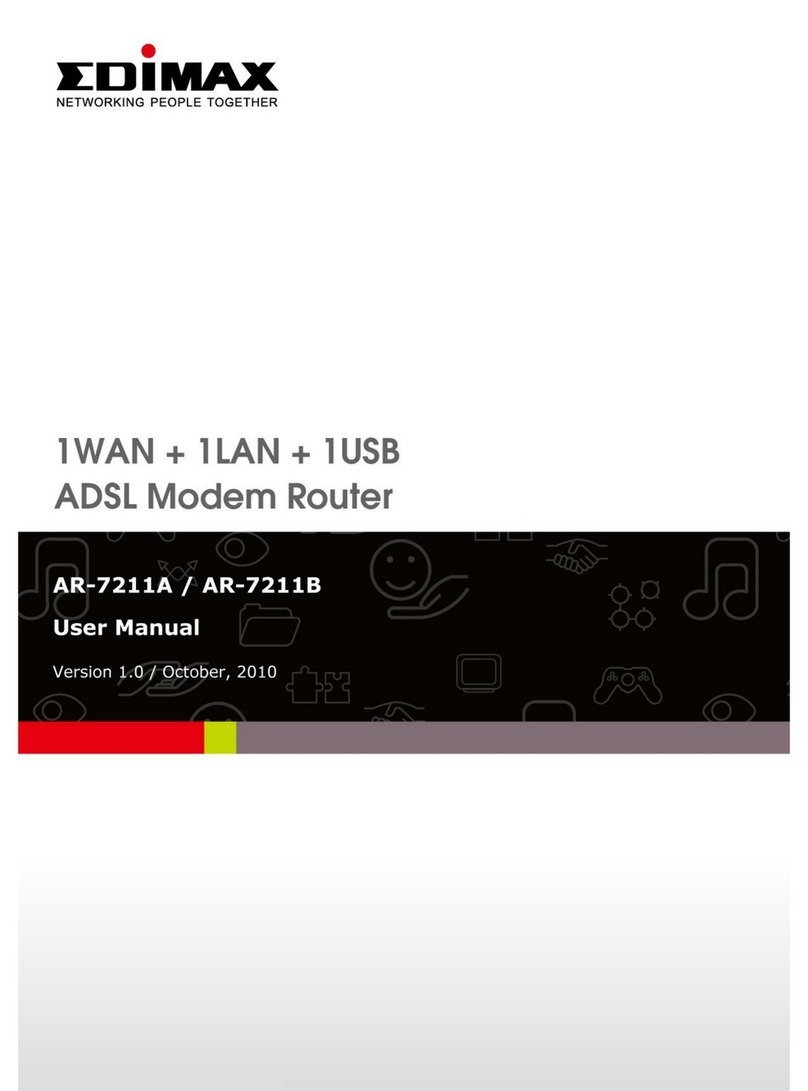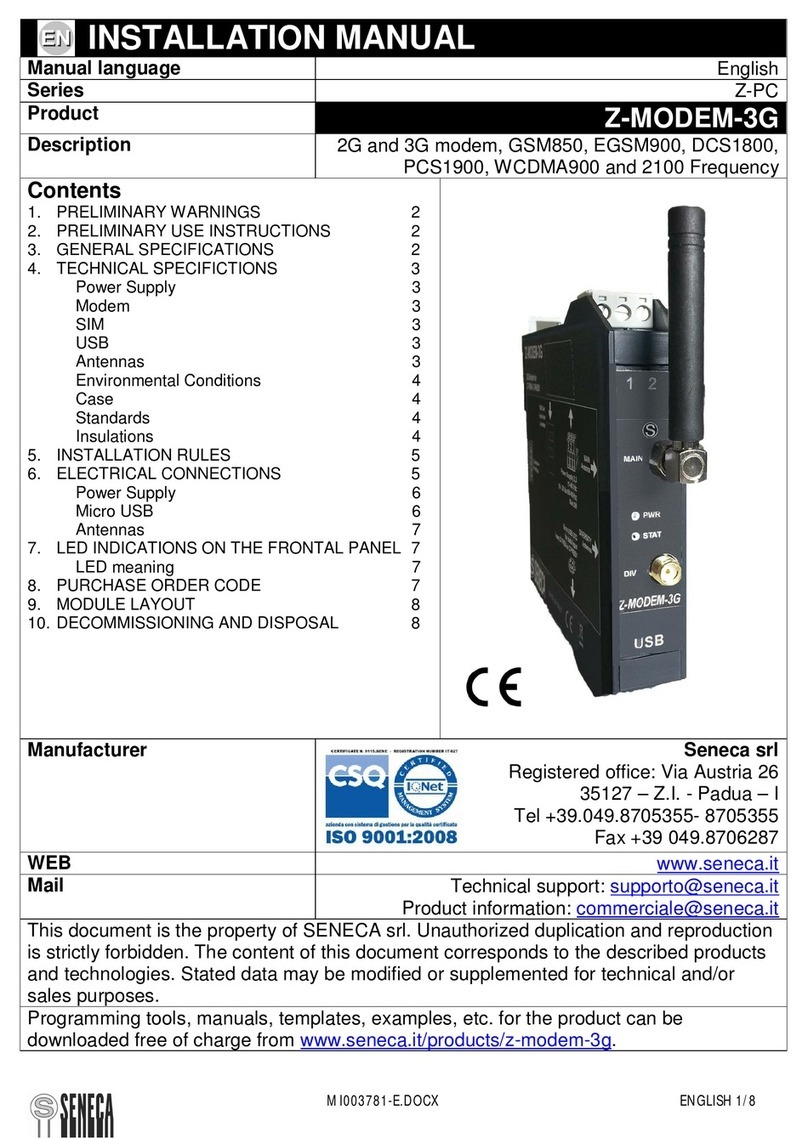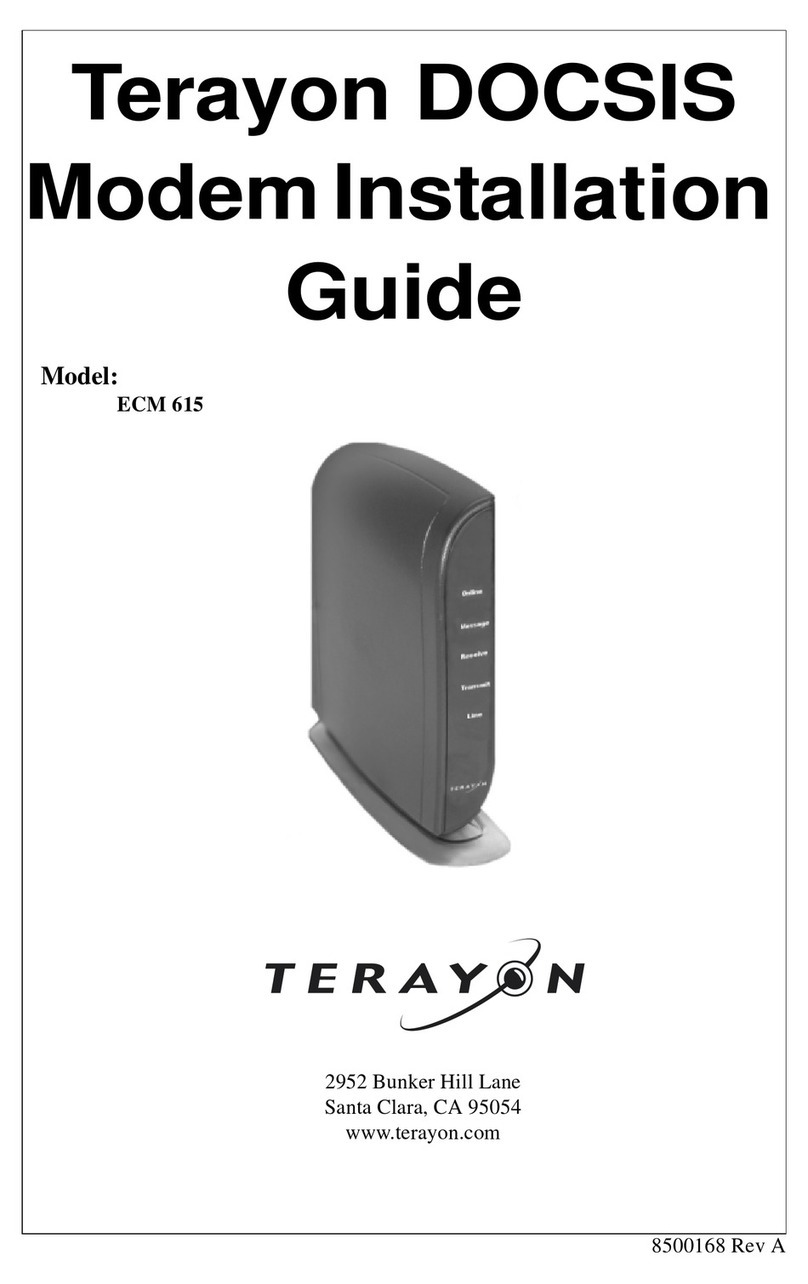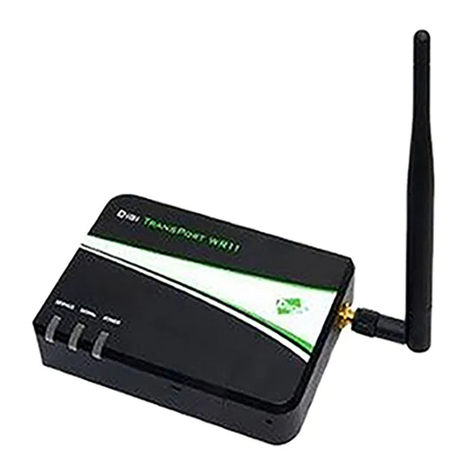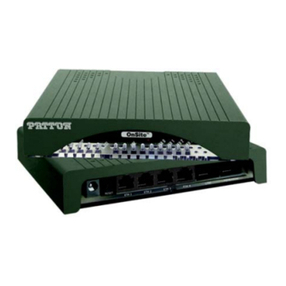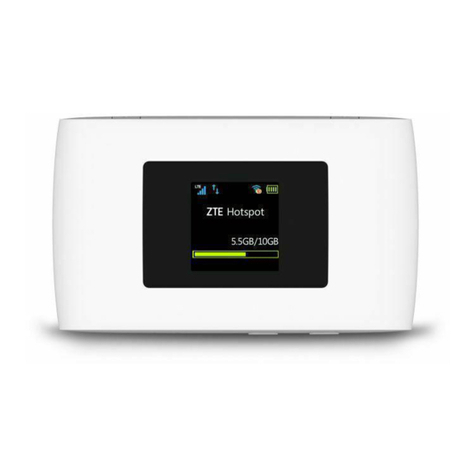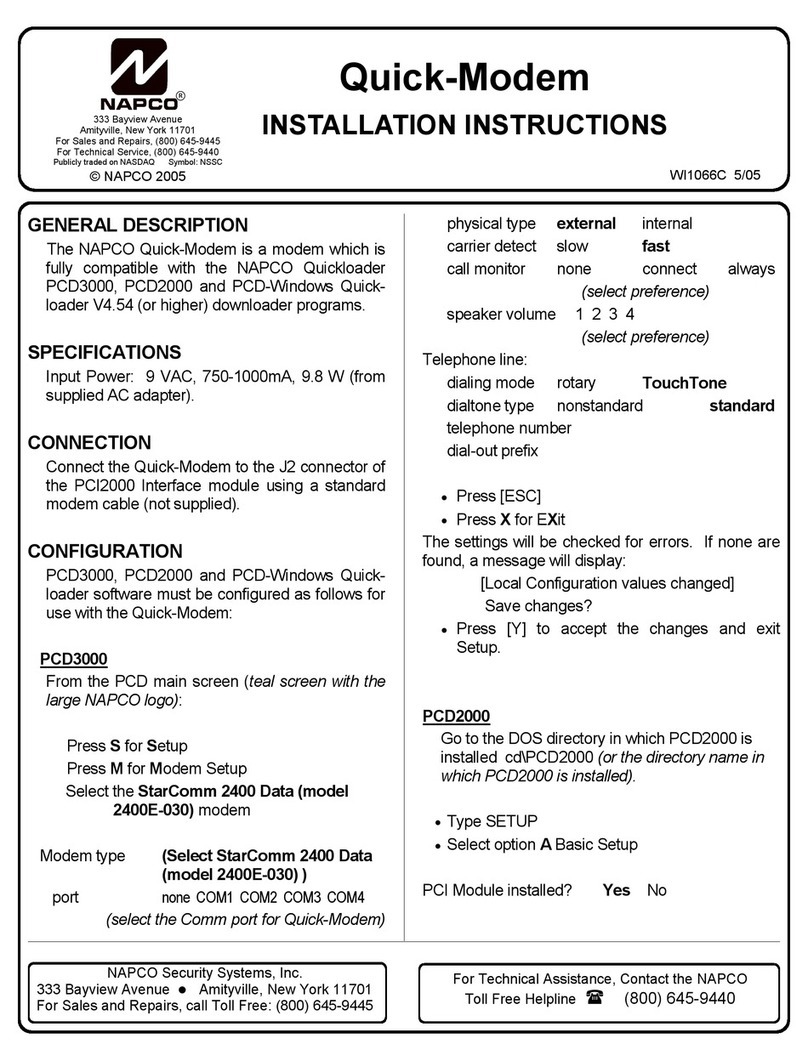Telenetics Corporation FT100 S User manual

FT100 S
Installation and Operation Manual
Telenetics Corporation
25111 Arctic Ocean
Lake Forest, California 92630
Doc No. TEL–6496504603014
February 2001
© 2001 Telenetics

ii
COPYRIGHT
Copyright 2001 Telenetics Corporation
Published by Telenetics, who reserves the right to make improvements in the products
described in this manual as well as to revise this publication at any time and without notice to
any person of such revision or change.
All rights reserved. No part of this publication may be reproduced, transcribed, stored in an
electronic retrieval system, translated into any language or computer language, or be trans-
mitted in any form whatsoever without the prior written consent of the publisher. For addi-
tional information contact
Telenetics Corporation
25111 Arctic Ocean
Lake Forest, California 92630
TRADEMARKS
Telenetics is a registered trademark of Telenetics Corporation.
The following are trademarks or registered trademarks of their respective companies or
organizations.
NOTICE
All titles, versions, trademarks, claims of compatibility, etc., of hardware and software prod-
ucts mentioned herein are the sole property and responsibility of the respective vendors. Tele-
netics makes no endorsement of any particular product for any purpose, nor claims
responsibility for its operation and accuracy.
UPDATES
Updates to the products and the manual are obtainable at participating Telenetics dealers and
distributors, or directly from Telenetics.
Product Company/Organization
Motorola Data Shelf Motorola
LocalView Motorola
IBM International Business Machines Corporation
AT&T American Telegraph & Telephone

iii
FCC REQUIREMENTS
This equipment complies with Part 68 of FCC Rules. Please note the following:
When you order service, the telephone company needs to know:
A. The Facility Interface Code:
04DU9-BN (1.544 Mbps superframe format (SF) without line power)
04DU9-DN (1.544 Mbps SF and B8ZS without line power)
04DU9-1KN (1.544 Mbps ANSI ESF without line power)
04DU9-1SN (1.544 Mbps ANSI ESF and B8ZS without line power)
B. The Service Order Code: 6.0N
A signal power affidavit will be required to guarantee encoded analog content and
billing protection unless this unit is used in combination with an XD type device or
no encoded analog signals and billing information are transmitted. A SAMPLE
AFFIDAVIT is attached. For most uses, the second box is appropriate.
C. The USOC Jack Required: RJ48C
In addition, if requested, please inform the telephone company of the make, model
number and FCC registration number, which are on the label.
The telephone company may change technical operations or procedures affecting your equip-
ment. You will be notified of changes in advance to give you ample time to maintain uninter-
rupted telephone service.
If you experience trouble with this telephone equipment, please contact
Te lenet ics
25111 Arctic Ocean
Lake Forest, California 92630
for information on obtaining service or repairs. The telephone company may ask that you
disconnect this equipment from the network until the problem has been resolved. If your
equipment continues to disrupt the network the telephone company may temporarily discon-
nect service. If this occurs you will be informed of your right to file a complaint with the
FCC.
WA R N IN G
This equipment uses, generates, and can radiate radio frequency energy inter-
fering with radio communications if not installed and used in accordance with the
instruction manual. It has been tested and complies with the limits for a Class A
computing device according to FCC Rules, Part 15. Operation of this equipment
in a residential area may cause interference. If it does, you must correct the cause
of the interference. Shielded cables may be necessary with this unit to ensure
compliance with the Class A limits.
Changes or modifications to this unit not expressly approved by the party respon-
sible for compliance could void the user's authority to operate the equipment.

iv
SPECIAL REQUIREMENTS FOR CANADA
Certain requirements exist for data communication products manufactured for use in Canada.
Principle among these requirements is the application of the IC label as described below.
However, certain data communication products do not require the IC label nor adherence to
IC requirements. If this is the case the IC label will not be affixed to the units.
INDUSTRY CANADA (IC) REQUIREMENTS
IC labels are affixed to each unit sold in Canada. This label has the certification number for
that particular unit. The numbers are different for each model.
The Industry Canada label identifies certified equipment. This certification means that the
equipment meets certain telecommunications network protective, operational, and safety
requirements. IC does not guarantee the equipment will operate to the user's satisfaction.
Before installing this equipment, users should ensure that it is permissible to be connected to
the facilities of the local telecommunications company. The equipment must also be installed
using an acceptable method of connection. In some cases, the company's inside wiring asso-
ciated with a single line individual service may be extended by means of a certified connector
assembly (telephone extension cord). The customer should be aware that compliance with
the above conditions may not prevent degradation of service in some situations.
Repairs to certified equipment should be made by an authorized Canadian maintenance
facility designated by the supplier. Any repairs or alterations made by the user to this equip-
ment, or equipment malfunctions, may give the telecommunications company cause to
request the user to disconnect the equipment. For their own protection users should ensure
that the electrical ground connections of the power utility, telephone lines and internal
metallic water pipe system, if present, are connected together. This precaution may be partic-
ularly important in rural areas.
CAUTION
Users should not attempt to make installation connections themselves, but should
contact the appropriate electric inspection authority or electrician.
CANADIAN EMISSION REQUIREMENTS
This Class A digital apparatus meets all requirements of the Canadian Interference-Causing
Equipment Regulations.
Cet appareil numérique de la classe A respecte toutes les exigences du Règlement sur le
matériel brouilleur du Canada.

Table of Contents
Chapter 1, Introduction
GENERAL . . . . . . . . . . . . . . . . . . . . . . . . . . . . . . . . . . 1-1
FUNCTIONAL DESCRIPTION . . . . . . . . . . . . . . . . . 1-1
PHYSICAL DESCRIPTION . . . . . . . . . . . . . . . . . . . . 1-2
Front Panel . . . . . . . . . . . . . . . . . . . . . . . . . . . . . . . . . . 1-2
Rear Panel . . . . . . . . . . . . . . . . . . . . . . . . . . . . . . . . . . . 1-3
FEATURES . . . . . . . . . . . . . . . . . . . . . . . . . . . . . . . . . 1-4
Chapter 2, Installation
General . . . . . . . . . . . . . . . . . . . . . . . . . . . . . . . . . . . . . 2-1
RECEIPT INSPECTION . . . . . . . . . . . . . . . . . . . . . . . 2-1
SITE PREPARATION . . . . . . . . . . . . . . . . . . . . . . . . . 2-2
CONNECTIONS . . . . . . . . . . . . . . . . . . . . . . . . . . . . . 2-3
FT 100S to Network . . . . . . . . . . . . . . . . . . . . . . . . . . . 2-3
FT 100S to Remote Control Device . . . . . . . . . . . . . . . 2-4
FT 100S to DTE . . . . . . . . . . . . . . . . . . . . . . . . . . . . . . 2-5
V.35 Adapter Installation . . . . . . . . . . . . . . . . . . . . . . . 2-5
POWER . . . . . . . . . . . . . . . . . . . . . . . . . . . . . . . . . . . . . 2-7
Chapter 3, Hardware Configuration
GENERAL . . . . . . . . . . . . . . . . . . . . . . . . . . . . . . . . . . 3-1
COVER REMOVAL . . . . . . . . . . . . . . . . . . . . . . . . . . 3-1
CHANGING OPTION SETTINGS . . . . . . . . . . . . . . . 3-2
Grounding . . . . . . . . . . . . . . . . . . . . . . . . . . . . . . . . . . . 3-4
DTE INTERFACE OPTIONS . . . . . . . . . . . . . . . . . . . 3-4
Installing an Interface Card . . . . . . . . . . . . . . . . . . . . . . 3-4
Using a Conversion Adapter . . . . . . . . . . . . . . . . . . . . . 3-5

Chapter 4, Front Panel Option Selection
GENERAL . . . . . . . . . . . . . . . . . . . . . . . . . . . . . . . . . . 4-1
LCD MENUS . . . . . . . . . . . . . . . . . . . . . . . . . . . . . . . . 4-1
Using the Pushbuttons to Select Options . . . . . . . . . . . 4-1
Powerup Displays . . . . . . . . . . . . . . . . . . . . . . . . . . . . . 4-4
PORT STATUS DISPLAY MAIN MENU 1 . . . . . . . 4-5
Line Status . . . . . . . . . . . . . . . . . . . . . . . . . . . . . . . . . . 4-6
DTE Status . . . . . . . . . . . . . . . . . . . . . . . . . . . . . . . . . . 4-7
DIAGNOSTIC OPTIONS MAIN MENU 2 4-8
T1 TESTS . . . . . . . . . . . . . . . . . . . . . . . . . . . . . . . . . . . 4-9
T1 Local Loopback . . . . . . . . . . . . . . . . . . . . . . . . . . . . 4-9
T1 Network Loopback . . . . . . . . . . . . . . . . . . . . . . . . . 4-11
Remote CSU Loopback . . . . . . . . . . . . . . . . . . . . . . . . 4-11
Test In Progress . . . . . . . . . . . . . . . . . . . . . . . . . . . . . . . 4-14
DTE PORT TESTS . . . . . . . . . . . . . . . . . . . . . . . . . . . . 4-14
DTE Port Local Terminal Loopback . . . . . . . . . . . . . . 4-15
DTE Port Remote Terminal Loopback . . . . . . . . . . . . . 4-15
DTE Port Remote Loopback . . . . . . . . . . . . . . . . . . . . . 4-18
With Test Pattern? . . . . . . . . . . . . . . . . . . . . . . . . . . . . . 4-20
DTE Port Test Pattern . . . . . . . . . . . . . . . . . . . . . . . . . . 4-22
Test In Progress . . . . . . . . . . . . . . . . . . . . . . . . . . . . . . . 4-22
Bit Errors Display . . . . . . . . . . . . . . . . . . . . . . . . . . . . . 4-24
Average Bit Error Rate Display . . . . . . . . . . . . . . . . . . 4-24
Elapsed Seconds Display . . . . . . . . . . . . . . . . . . . . . . . 4-24
Restart Test Display . . . . . . . . . . . . . . . . . . . . . . . . . . . 4-25
SELF TEST . . . . . . . . . . . . . . . . . . . . . . . . . . . . . . . . . . 4-25
DS0 MONITOR . . . . . . . . . . . . . . . . . . . . . . . . . . . . . . 4-26
PERFORMANCE HISTORY . . . . . . . . . . . . . . . . . . . . 4-27
% Error Free Seconds . . . . . . . . . . . . . . . . . . . . . . . . . . 4-28
Error Events . . . . . . . . . . . . . . . . . . . . . . . . . . . . . . . . . 4-28
Timed Error Data . . . . . . . . . . . . . . . . . . . . . . . . . . . . . 4-29
CONFIGURATION OPTIONS MAIN MENU 3 . . . . 4-30

T1 LINE OPTIONS . . . . . . . . . . . . . . . . . . . . . . . . . . . 4-31
T1 Framing . . . . . . . . . . . . . . . . . . . . . . . . . . . . . . . . . . 4-32
Line Code . . . . . . . . . . . . . . . . . . . . . . . . . . . . . . . . . . . 4-32
Bit Stuffing . . . . . . . . . . . . . . . . . . . . . . . . . . . . . . . . . . 4-33
ANSI Error History . . . . . . . . . . . . . . . . . . . . . . . . . . . . 4-33
AT&T Error History . . . . . . . . . . . . . . . . . . . . . . . . . . . 4-34
Timing . . . . . . . . . . . . . . . . . . . . . . . . . . . . . . . . . . . . . . 4-34
Line Loopback . . . . . . . . . . . . . . . . . . . . . . . . . . . . . . . 4-35
Payload Loopback . . . . . . . . . . . . . . . . . . . . . . . . . . . . . 4-35
Idle Code . . . . . . . . . . . . . . . . . . . . . . . . . . . . . . . . . . . . 4-36
Yellow Alarm . . . . . . . . . . . . . . . . . . . . . . . . . . . . . . . . 4-36
Network Line Interface . . . . . . . . . . . . . . . . . . . . . . . . . 4-37
DTE PORT OPTIONS . . . . . . . . . . . . . . . . . . . . . . . . . 4-37
V.35 or RS-530 Interface Card . . . . . . . . . . . . . . . . . . . 4-37
Port Data Rate . . . . . . . . . . . . . . . . . . . . . . . . . . . . . . . . 4-38
DS0 Grouping . . . . . . . . . . . . . . . . . . . . . . . . . . . . . . . . 4-39
Transmit Clock Source . . . . . . . . . . . . . . . . . . . . . . . . . 4-40
Transmit Clock Polarity . . . . . . . . . . . . . . . . . . . . . . . . 4-41
Receive Clock Polarity . . . . . . . . . . . . . . . . . . . . . . . . . 4-41
CTS Signal Operation . . . . . . . . . . . . . . . . . . . . . . . . . . 4-41
RLSD Signal Operation . . . . . . . . . . . . . . . . . . . . . . . . 4-42
DSR Signal Operation . . . . . . . . . . . . . . . . . . . . . . . . . . 4-42
TM Signal Operation . . . . . . . . . . . . . . . . . . . . . . . . . . 4-43
LL Signal Operation . . . . . . . . . . . . . . . . . . . . . . . . . . . 4-43
RL Signal Operation . . . . . . . . . . . . . . . . . . . . . . . . . . . 4-43
Remote Loopback Operation . . . . . . . . . . . . . . . . . . . . 4-44
CONTROL PORT OPTIONS . . . . . . . . . . . . . . . . . . . 4-44
Control Mode . . . . . . . . . . . . . . . . . . . . . . . . . . . . . . . . 4-45
Baud Rate . . . . . . . . . . . . . . . . . . . . . . . . . . . . . . . . . . . 4-46
Local Echo . . . . . . . . . . . . . . . . . . . . . . . . . . . . . . . . . . 4-46
SETTING A PASSWORD . . . . . . . . . . . . . . . . . . . . . . 4-47
SET TIME AND DATE . . . . . . . . . . . . . . . . . . . . . . . . 4-47

Chapter 5, Operation
GENERAL . . . . . . . . . . . . . . . . . . . . . . . . . . . . . . . . . . 5-1
CONTROLS AND INDICATOR . . . . . . . . . . . . . . . . . 5-1
LED DESCRIPTION . . . . . . . . . . . . . . . . . . . . . . . . . . 5-1
TD . . . . . . . . . . . . . . . . . . . . . . . . . . . . . . . . . . . . . . . . . 5-1
RD . . . . . . . . . . . . . . . . . . . . . . . . . . . . . . . . . . . . . . . . . 5-1
CS . . . . . . . . . . . . . . . . . . . . . . . . . . . . . . . . . . . . . . . . . 5-2
LOS . . . . . . . . . . . . . . . . . . . . . . . . . . . . . . . . . . . . . . . . 5-2
ALM . . . . . . . . . . . . . . . . . . . . . . . . . . . . . . . . . . . . . . . 5-2
TM . . . . . . . . . . . . . . . . . . . . . . . . . . . . . . . . . . . . . . . . . 5-2
Chapter 6, Control Port Operation
GENERAL . . . . . . . . . . . . . . . . . . . . . . . . . . . . . . . . . . 6-1
Using Control Port Commands . . . . . . . . . . . . . . . . . . . 6-1
CONNECTING TO A TERMINAL . . . . . . . . . . . . . . . 6-9
CONNECTING TO A MODEM . . . . . . . . . . . . . . . . . 6-10
CONNECTING TO LOCALVIEW . . . . . . . . . . . . . . . 6-11
MAIN MENU . . . . . . . . . . . . . . . . . . . . . . . . . . . . . . . . 6-12
T1 LINE CONFIGURATION . . . . . . . . . . . . . . . . . . . 6-14
DTE PORT SUMMARY . . . . . . . . . . . . . . . . . . . . . . . 6-16
DTE PORT CONFIGURATION
(V.35, RS-530, RS-232 Card) . . . . . . . . . . . . . . . . . . . . 6-16
CONTROL PORT CONFIGURATION . . . . . . . . . . . . 6-18
TIME AND DATE . . . . . . . . . . . . . . . . . . . . . . . . . . . . 6-18
T1 LINE TEST OPTIONS . . . . . . . . . . . . . . . . . . . . . . 6-19
DTE PORT TESTS . . . . . . . . . . . . . . . . . . . . . . . . . . . . 6-19
PERFORMANCE HISTORY . . . . . . . . . . . . . . . . . . . . 6-20
Error Condition Categories . . . . . . . . . . . . . . . . . . . . . . 6-20
Error Events . . . . . . . . . . . . . . . . . . . . . . . . . . . . . . . . . 6-20
Error Reporting Menus . . . . . . . . . . . . . . . . . . . . . . . . . 6-22
ESF Per AT&T Pub 54016 . . . . . . . . . . . . . . . . . . . . . . 6-22
ESF Per ANSI T1.403 . . . . . . . . . . . . . . . . . . . . . . . . . . 6-22

SF Error . . . . . . . . . . . . . . . . . . . . . . . . . . . . . . . . . . . . . 6-23
Local Error History ANSI T1.403 . . . . . . . . . . . . . . . . 6-23
Remote Error History Per AT&T 54016 . . . . . . . . . . . . 6-23
Carrier Performance History . . . . . . . . . . . . . . . . . . . . . 6-24
User Performance History . . . . . . . . . . . . . . . . . . . . . . . 6-24
REMOTE FT 100S CONFIGURATION . . . . . . . . . . . 6-25
Configuration Control CRC . . . . . . . . . . . . . . . . . . . . . 6-25
Remote Configuration Mode CRM . . . . . . . . . . . . . . . 6-26
Get Remote Configuration CR1 . . . . . . . . . . . . . . . . . . 6-26
Send Remote Configuration CR2 . . . . . . . . . . . . . . . . . 6-26
Send Remote Unit ID CR3 . . . . . . . . . . . . . . . . . . . . . . 6-26
Send Remote Password CR4 . . . . . . . . . . . . . . . . . . . . 6-26
Send Remote Time and Date CR5 . . . . . . . . . . . . . . . . 6-26
Command Entry . . . . . . . . . . . . . . . . . . . . . . . . . . . . . . 6-27
Chapter 7, Maintenance
GENERAL . . . . . . . . . . . . . . . . . . . . . . . . . . . . . . . . . . 7-1
FUSE . . . . . . . . . . . . . . . . . . . . . . . . . . . . . . . . . . . . . . . 7-1
MAINTENANCE . . . . . . . . . . . . . . . . . . . . . . . . . . . . . 7-1
Chapter 8, Troubleshooting
GENERAL . . . . . . . . . . . . . . . . . . . . . . . . . . . . . . . . . . 8-1
Common Questions and Answers . . . . . . . . . . . . . . . . . 8-2
BEFORE YOU CONTACT TELENETICS . . . . . . . . . 8-4
Appendix A, Specifications
Appendix B, Control Port Command Quick Reference
Appendix C, T1 Overview
GENERAL . . . . . . . . . . . . . . . . . . . . . . . . . . . . . . . . . . C-1
Framing Formats . . . . . . . . . . . . . . . . . . . . . . . . . . . . . . C-2

FT 100S 1-1
Chapter 1
Introduction
GENERAL
The Telenetics FT 100S Fractional T1 CSU/DSU combines a single
channel, fractional T1 DSU with a T1 ESF CSU. The unit interfaces
customer premise data and voice equipment to a T1 transmission
facility. High speed workstations, local and wide area networks
(WANs), Private Branch Exchanges (PBXs), facsimiles, and host
computers are examples of customer equipment which may communi-
cate over public or private T1 networks using the FT 100S.
FUNCTIONAL DESCRIPTION
The FT 100S receives serial data from the customer Data Terminal
Equipment (DTE) and multiplexes it onto a 1.544 Mbps DS-1 signal.
The DS-1 signal interfaces to the T1 network via an integral ESF CSU.
The DTE ports enable data rates from 56 kbps to 1.536 Mbps. The unit
complies with DTE interface standards for V.35 and supports all Frac-
tional T1 applications.
Network management and configuration for the FT 100S are provided
by several methods. A Liquid Crystal Display (LCD) front panel
accesses all configuration and diagnostic options. An RS-232 rear panel
interface labeled CONTROL allows configuring and testing the unit
via terminal, computer, or remotely via modem. When the RM16M
model is installed in the LocalView Shelf, configuration and diagnostics
are accessible via the LocalView terminal. Operating parameters are
stored in nonvolatile memory.

Introduction
1-2 FT 100S
PHYSICAL DESCRIPTION
The FT 100S can be either a standalone desktop unit or a shelf mount
model.
Front Panel
Three front panel pushbuttons, YES, NO, and HOME, enable user input.
A front panel 32-character LCD allows menu driven user operation and
real time unit status displays. DTE signal status can be monitored by six
LEDs and the LCD on the front panel (Figure 1-1).
Figure 1-1
Front Panel
FT 100S
LOS
ALM
TM
YES NO HOME
TD
RD
CS

Introduction
FT 100S 1-3
Rear Panel
The rear panel (Figure 1-2) contains a power cord, fuse, an 8-pin RJ48C
network interface connector, a 9-pin D-type interface connector for
external control, and one 25-pin D-type DTE connectors. Since the FT
100S connects directly to the T1 network, it does not include an ON/
OFF power switch.
Figure 1-2
Rear Panel
115 VAC
60 HZ
1/8 AMP
CONTROL
DTE
NWK
F
U
S
E
F
U
S
E
F
U
S
E
3/16
AMP S.B.
250 VAC

Introduction
1-4 FT 100S
FEATURES
•UDS and Telenetics LocalView Shelf compatible
•V.35 synchronous interface
•All standard data rates: n x 56 kbps, n x 64 kbps (where n = number
1 to 24 of DS0 time slots-- 1.536 Mbps max)
•Fractional T1 compatible
•Uniform synthesized DTE transmit and receive clocks
•Flexible timing options
•Integral CSU
•B8ZS clear channel capability
•ESF or SF framing modes
•ESF diagnostics per AT&T 54016 and ANSI T1.403
•Built-in network and per channel loopback test capability
•Front panel LED status display for DTE ports
•Configuration and diagnostic options via: Front panel LCD, RS-
232 control port, or Motorola LocalView

FT 100S 2-1
Chapter 2
Installation
GENERAL
This chapter provides installation information for the FT 100S. If
changing hardware options to meet system requirements, refer to
Chapter 3 before installation.
☞ Note
When requesting T1 network service, personnel operating
this equipment must complete the affidavit in the front of
this manual and file it with the telephone company
providing service.
RECEIPT INSPECTION
Inspect the equipment carefully for damage that may have occurred in
shipment. If there is damage or material shortage, contact the shipping
agent and Telenetics authorized agent for advice and assistance. Retain
the shipping container and packing material for possible future ship-
ment.
The FT 100S arrives with the following components:
•Standalone housing containing two main circuit boards
•Two user specified piggyback interface boards/adapters
•Power transformer with cable
•T1 line cables
•V.35 adapter (included withV.35 unit)
•User's Guide
The following components must be supplied by the user:
•RS-449 adapter
•Control port adapter

Installation
2-2 FT 100S
SITE PREPARATION
The installation area should be clean, well-lighted, and free from
extremes of temperature, humidity, appreciable shock, and vibration.
Allow sufficient space at the rear of the unit for cable clearance and air
flow. See Figure 2-1.
Figure 2-1
Installation
Control
Terminal Cable
RJ48C
Jack
DTE
Cable
115 VAC
60 HZ
1/8 AMP
NWK
F
U
S
E
F
U
S
E
F
U
S
E
3/16
AMP S.B.
250 VAC
PORT 1
DTE Connector
CONTROL
Port
CONTROL

Installation
FT 100S 2-3
CONNECTIONS
☞ Note
Before connecting the unit to the network or the DTE, deter-
mine whether the factory setting for Network Transmit LBO
is set as required or must be changed. Refer to Chapter 3.
FT 100S to Network
Network T1 line connections are made through a standard 8-pin RJ48C
jack labeled NWK on the rear panel. Table 2-1 list pin connections for
the network connector.
To connect the unit to the network,
1. Insert one end of the supplied cable into the unit's NWK
jack.
2. Insert the other end into the RJ48C on the T1 Network
interface connector.
Table 2-1. Network Connector Pin Functions
RJ48C Pin Function
1 Network receive ring (R1)
2 Network receive tip (T1)
3 Not used
4 Network transmit (R)
5 Network transmit (T)
6 Not used
7, 8 Ground

Installation
2-4 FT 100S
FT 100S to Remote Control Device
The 9-pin D-type male connector labeled CONTROL on the rear panel
connects to the terminal that controls FT 100S operation, or to a modem
connected to a remote terminal that controls the unit.
The interface is compatible with EIA RS-232 serial data operation and
has pin functions like a DCE interface.
This is the same type of connector with the same pin connections as
found on IBM PC/AT personal computers and compatibles so that stan-
dard cables can be used.
Pin connections for this interface are shown in Table 2-2.
To connect the unit to the network,
1. Insert one end of the cable into the unit's CONTROL port.
2. Insert the other end into the RS-232 connector on the
controlling equipment.
Table 2-2. Control Port Connector Pin Functions
DB9 Pin Function
1 Data carrier detect
2 Receive data
3 Transmit data
4 Data terminal ready
5Ground
6 Data set ready
7 Request to send
8 Clear to send
9 Not used

Installation
FT 100S 2-5
FT 100S to DTE
The 25-pin D-type female connector on the rear panel connect to the
DTE. Table 2-3 and Table 2-4 show pin connections for the optional
DTE connector available.
To connect the unit to the DTE,
1. Insert the DTE cable into the DTE connector on the unit.
2. Insert the opposite end into the designated DTE.
3. Secure the screws to complete the connection.
V.35 Adapter Installation
The V.35 adapter is provided with the FT 100S. Optional adapters are
available for converting the DTE connector to a 34-pin V.35 type
connector or to a 37-pin RS-449 type connector. You can use the
RS-449 adapter. The RS-449 adapter is not provided with the FT 100S.
Pin connections for the V.35 and RS-449 adapters are listed in Table 2-3
and Table 2-4.
Table 2-3. RS-530 / RS-449 Pin Functions
RS-530
(DB25) Pin RS-449
(DB37) Pin Function
1 1 Protective ground
2 4 Transmit data A
3 6 Receive data A
4 7 Request to send A
5 9 Clear to send A
6 11 Data set ready A
7 19 Signal ground
8 13 Receive line signal detect A
9 26 Receive clock B
10 31 Receive line signal detect B
11 35 External transmit clock B
12 23 Transmit clock B
13 27 Clear to send B

Installation
2-6 FT 100S
14 22 Transmit data B
15 5 Transmit clock A
16 24 Receive data B
17 8 Receive clock A
18 10 Local loopback
19 25 Request to send B
20 12 Data terminal ready A
21 14 Remote loopback
22 29 Data set ready B
23 30 Data terminal ready B
24 17 External transmit clock A
25 18 Test mode
Table 2-4. V.35 Functions (Part Number 5003769-01)
V.35 (DB25)
Connector
Pin
V. 3 5
(34 pin V.35)
Adapter Pin Function
1 A Protective ground
2 P Transmit data A
3 R Receive data A
4 C Request to send
5DCleartosend
6 E Data set ready
7 B Signal ground
8 F Receive line signal detect
9-12 -- Not used
13 AA/a Transmit clock B
14 S Transmit data B
15 Y Transmit clock A
16 T Receive data B
17 V Receive clock A
18 J Local loopback
19 X Receive clock B
Table 2-3. RS-530 / RS-449 Pin Functions (Continued)
Table of contents
Popular Modem manuals by other brands

Atlantis Land
Atlantis Land Web Share 111U user guide
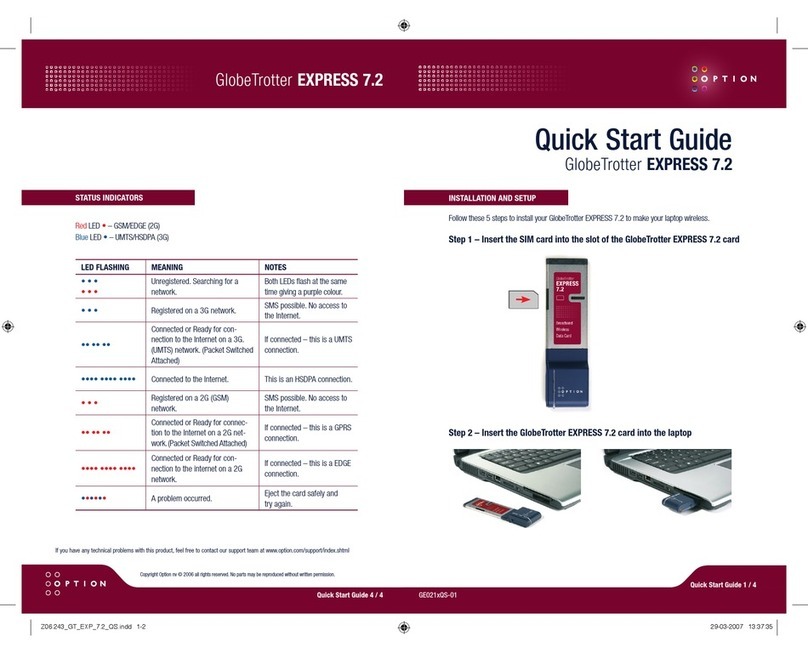
Option Audio
Option Audio GlobeTrotter EXPRESS 7.2 quick start guide

Zhone
Zhone 4821-A2 installation guide

Motorola
Motorola SURFboard SBV5322 Safety and regulatory information
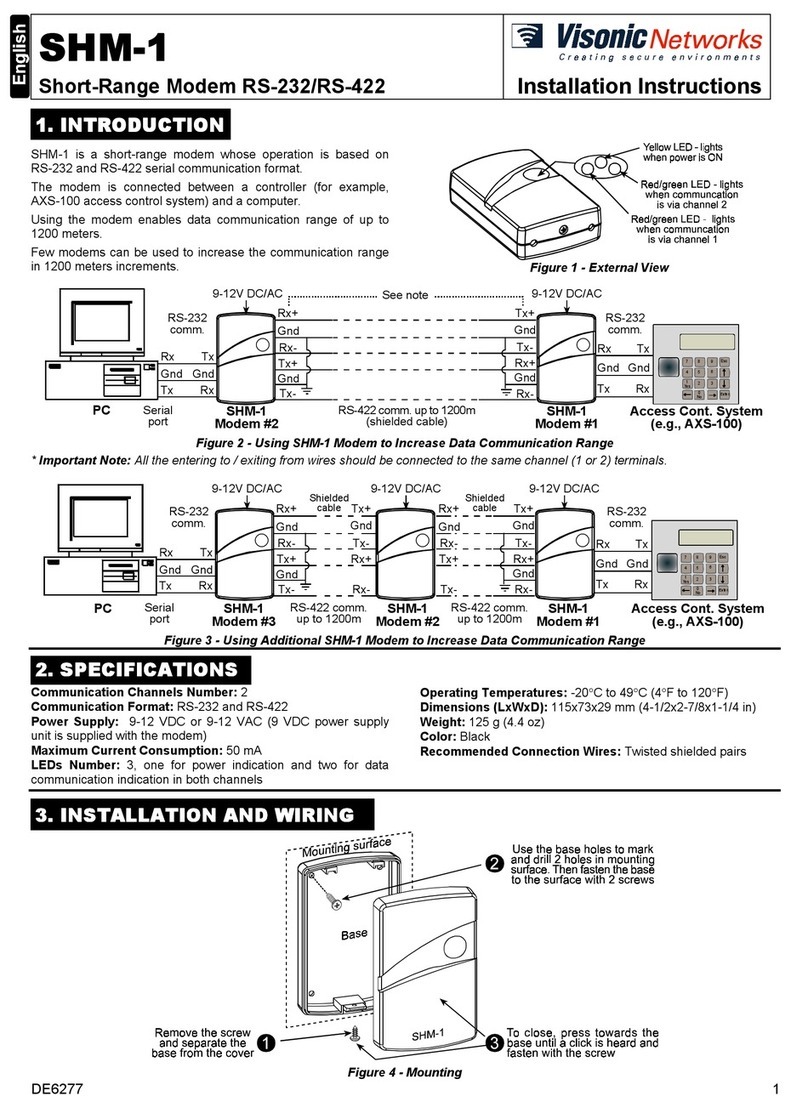
Visonic Networks
Visonic Networks SHM-1 installation instructions

Adsl nation
Adsl nation M3 user guide

